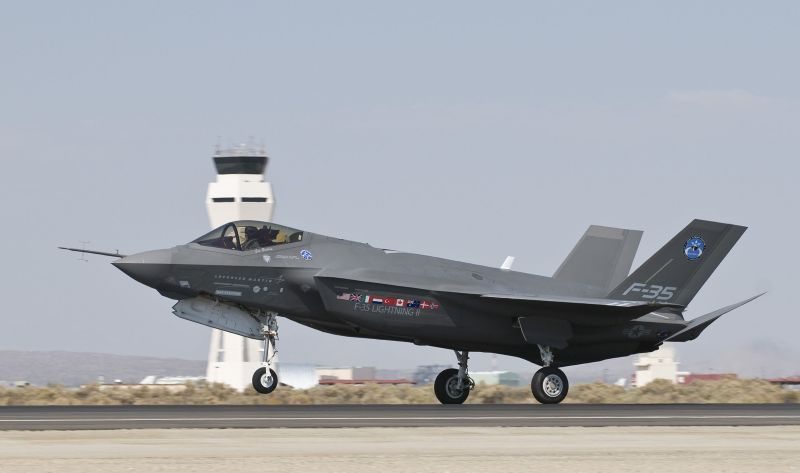The 58th Fighter Squadron became the Air Force’s first complete F-35A Lightning II squadron after they welcomed their 26th and final F-35A May 28 at the 33rd Fighter Wing, here.
Maj. Scott Charlton, 58th FS pilot, ferried the aircraft, AF-45, from Lockheed Martin’s F-35 production center in Fort Worth, Texas.
“We’ve been in a growth mindset for the last few years,” said Lt. Col. Matt Renbarger, the 58th FS commander. “We’ve been focused on adapting our training levels to the availability of aircraft as a growing squadron. It’s been exciting to see this mission develop, but we’re more excited to dial-in all of our attention to training our team.”
The arrival of the last Air Force joint strike fighter variant scheduled to be stationed at the wing marked a shift in priorities for the 58th FS and 58th Aircraft Maintenance Unit. Both units experienced a series of transitions and accomplishments since the arrival of the first F-35A here July 14, 2011.
Renbarger was trained in the initial cadre of F-35 instructor pilots. He witnessed the number of JSF pilots swell to 100 since the F-35 training mission was first established here in October 2009. Half of those pilots are Air Force.
“We are focusing now on refining our processes and training, improving our tactics, and really optimizing our overall program to meet the needs of the Air Force as our Airmen move out to other F-35 missions,” said Renbarger.
The last F-35A delivered is more capable than the first F-35A delivered three years ago as a result of the F-35 program’s concurrency development model. The concurrency model executes testing, training and development simultaneously and incorporates feedback from each area into subsequent Low Rate Initial Production blocks produced at Lockheed Martin’s mile-long factory in Fort Worth.
Renbarger highlighted that AF-45 arrived with Block 2A software and upgrades, including the use of simulated weapons, datalinks, and night and Instrument Meteorological Conditions flight capabilities.
“The arrival of AF-45 is an incredible milestone for the Air Force as we move closer to F-35A Initial Operational Capability in 2016,” said Col. Todd Canterbury, 33rd FW commander. “The men and women here are establishing the foundation for all F-35A training operations. Having our full end-strength grants our pilots and maintainers more flexibility in training, and that flexibility lets us advance the F-35 program at a faster rate than ever before.”
The 33rd FW is home to the F-35 Integrated Training Center responsible for F-35 A/B/C Lightning II pilot and maintainer training for the Marine Corps, the Navy, the Air Force and, in the future, at least eight international partners.









